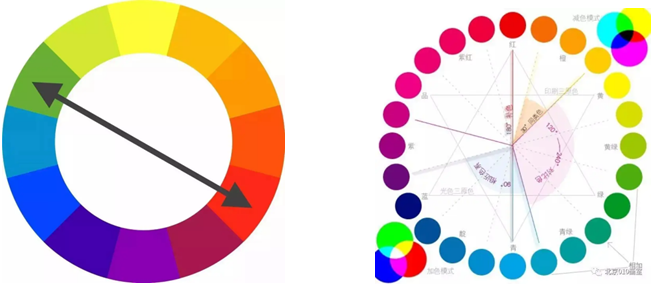Two primary colors can be adjusted to form a secondary color, and the secondary color and the primary color that does not participate are complementary colors to each other. For example, yellow and blue are combined to form green, and red, which is not involved, is the complementary color of green, which is 180° opposite to each other in color exchange.
Two colors are complementary if they produce gray or black. In practical applications, a certain proportion of pure red, yellow, and blue can be mixed to make special black or black gray.
The complement of red is green, yellow, and blue; the complement of yellow, violet, is red and blue; the complement of blue, orange, is red and yellow. It can be summarized as: red-green (complementary), blue-orange (complementary), yellow-purple (complementary).

When blending colors, you can use complementary colors to fine-tune the chromatic aberration. For example, if the color is yellow, you can add a small amount of blue, and if the color is blue, you can add a small amount of yellow-based pigments; in the same way, red and green, green and red (that is, subtraction mixing principle).
When tinting plastic products, the fewer toner varieties used, the better. Because in subtractive mixing, since each pigment must absorb a certain amount of light from the incoming white light, the overall color tends to become darker. .
One of the principles of color matching is: if you can use two colors to spell out, you should never use three colors, because too many varieties can easily bring in complementary colors and make the color dark. Conversely, if you adjust the gray series of colors, you can add complementary colors to adjust.
References:
[1] Zhong Shuheng. Color Composition. Beijing: China Art Publishing House, 1994.
[2] Song Zhuoyi et al. Plastic raw materials and additives. Beijing: Science and Technology Literature Publishing House, 2006.
[3] Wu Lifeng et al. Masterbatch User Manual. Beijing: Chemical Industry Press, 2011.
[4] Yu Wenjie et al. Plastic Additives and Formulation Design Technology. 3rd Edition. Beijing: Chemical Industry Press, 2010.
[5] Wu Lifeng. Plastic Coloring Formulation Design. 2nd Edition. Beijing: Chemical Industry Press, 2009
Post time: Jun-25-2022






